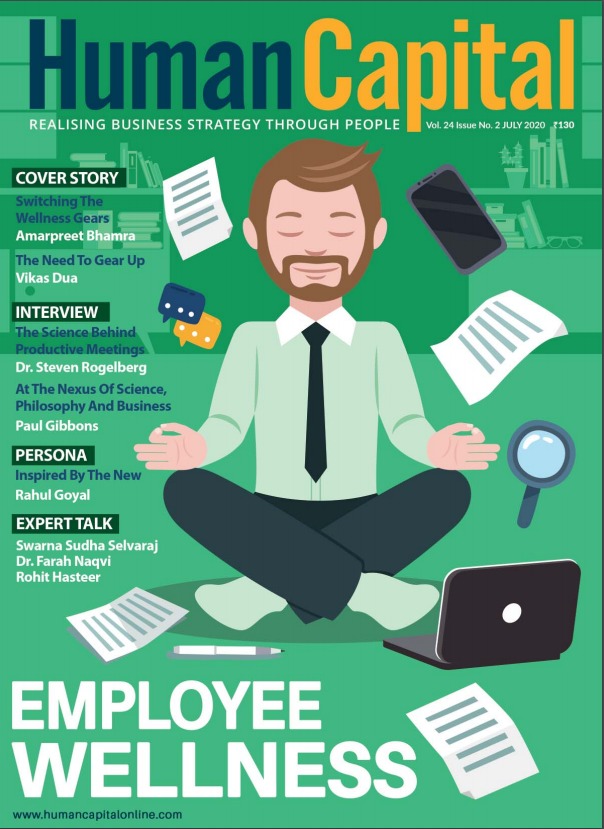There is an eternal realisation that a diverse workforce bonds together to collaborate and develop a higher level of engagement in deriving solutions for their customers.
Inclusivity at the Workplace has emerged as a subject of higher gravity, especially in light of higher ROIs and engagement of employers and stockholders. In the process of gradual realisation, it has also been experienced that workplaces exude confidence through fair and transparent treatment of every societal section, not limited to gender, colour and caste. There is an eternal realisation that a diverse workforce bonds together to collaborate and develop a higher level of engagement in deriving solutions for their customers. Imagine one’s experience when he/she would enter an organisation with a toxic culture as against a culture of understanding where people feel safe and enjoy delivering their value to the group.
The challenges
As a People and Culture Leader, I hear about the challenges observed by the leadership in driving the agenda of Inclusivity across the organisation. And I realised that this is a low hanging fruit that can easily help in trailing the agenda across the workforce. The larger dimension of the audience understands processes and policies which are easily visible. However, culture comes across as a higher impacting component that is observed subconsciously, and despite changes in policies and celebrations across social media, the essential fact remains the same.
One would like to categorise the major lever to be pulled in removing the biases that individuals carry to the workplace. As we know, we hire people from diverse backgrounds, and therefore, there is an apparent mechanical and chemical effect from these people into the work environment. Things they carry may be right or wrong/should be versus should not be etc. Let us first list down some of the damages caused by bias to the organisation’s culture:
1. Bias leads to inhibitions in people against what is natural, which in turn, inhibits creativity among the workforce
2. Bias deteriorates collaboration and teamwork within the workforce
3. Bias develops barriers to communication at the vertical and horizontal levels
4. The talent market share is significantly reduced
5. The organisation is unable to retain talent for a very long time
6. Cultural diversity ceases to exist
7. Last but not the least, the organisation is unable to develop a cultural ecosystem around the society.
Types of Biases at the workplace
One would like to cite certain examples from one’s professional life where biases were observed:
A. Gender Bias: Gender Bias is a very critical bias prevalent at the workplaces. Associating gender with skill and ability shoots down possibilities for a larger group of talent. Associating competency with gender is the biggest misnomer that emerges out of gender bias. This also leads to misappropriation of performance dynamics and effectively minimises the hipotential talent pool.
B. Language Bias: There is a prevalent Bias against languages and regional and cultural background. One encountered a leadership interview in the past wherein one of the panellists mentioned that a certain section of society in India who spoke Gujarati was supposedly sincere. Likewise, there are associated biases that tend to skew decisionmaking amongst individuals for candidates, and eventually, their behaviour.
C. Colour Bias: There is also a bias against colour choices in terms of clothing, the choice of colours for utility products like cars, the colour of the walls and other products used by a person.
D. Bias against mannerism: Bias against a person’s mannerisms, either feminine or masculine, are also visible in organisations.
E. Activity Bias: Bias against the choice of sports and leisure activities and discrimination if the choices do not move as per traditionally defined choices in an organisation.
F. Status Bias: People are also biased against the marital status including the choice of partners and their respective professions.
G. Self-Bias: Self-Bias is the most common bias observed at workplaces, where people are comfortable in hiring people who think or behave like them. This primarily stems acclimatising against the diversity of thoughts at the workplace.
The list is endless and the demarcated biases mentioned not only occur at the workplace, but also in the society.
The role of the leadership
By and large, biases stem from the conditioned thoughts in which individuals are brought up. And, they are truly reflected from the regression faced by the individuals from their family members with whom they have been brought up since their childhood. The abovementioned biases that people carry lead to the dampening of culture at the workplaces. Not only do they hamper people from getting their views across each other, but also limit their expression of thoughts which may hamper collaboration, and eventually, compromise the team output.
As leaders of organisations across industries, it is critical to developing focused interventions to remove biases. It enables developing the need to be able to allow people to question their thoughts and pre-conceived notions.
Though the journey is long, one did assimilate some easy steps that organisations need to undertake to make this a crucial component of their talent transformation strategy. Though there is no easy solution, some of these steps should, however, allow us to look at the unique ways in which organisations have been able to derive cultural benefits from such biases. Breaking myths and sensitising the workforce are the best means from which organisations swiftly define the change and gradually drive it across the community and the ecosystem.
Prior to any intervention around sensitisation, spreading positive awareness helps in creating knowledge about being different and coexisting enables the creation of a better ecosystem.
The second intervention is around making it a collaborative effort against a selective group of individuals in achieving this. Leaders who work to spread the intervention around the organisation would be termed as change agents. These change agents are certain to function with high positivity for people who would approach them when in need. All of us who are learning new phases from extracts and best practices and drawing support from external ally partners always help in building the momentum and a successful diversity and inclusion journey.
Basis my interaction with some of the HR leaders and my own experiences, I could assimilate the critical task with the organisation leadership in driving control over the softer issues like removing biases and developing a more inclusive culture. This further allows control over softer issues such as removing biases and developing a more inclusive culture that people are comfortable associating with.

Do you think hybrid work arrangements would be a common feature of the workplaces going forward?
Trending
-
SBI General Insurance Launches Digital Health Campaign
-
CredR Rolls Out 'Life Happens' Leave For Its Employees
-
Meesho Announces 30-Week Gender-Neutral Parental Leave Policy
-
Microsoft Unveils Tech Resilience Curriculum To Foster An Inclusive Future
-
60% Indian Professionals Looking For Job Change Due To COVID: Survey
-
SpringPeople And Siemens Collaborate For Digital Transformation Push
-
86% Professionals Believe Hybrid Work Is Essential For Work Life Balance: Report
-
Almost 1 In Every 3 People's Personal Life Affected Due To Work Stress
-
Meesho Rolls Out Reset And Recharge Policy For Employees
-
80% Of Talent Leaders & Academics Say Pandemic Changed Skill Needs For Youth: Report
-
Hero Electric Rolls Out 'Hero Care' Program For Employees
-
Human Capital In Collaboration With ASSOCHAM Hosts Virtual Conference
-
IKEA India, Tata STRIVE Collaborate To Create Employability And Entrepreneurship Opportunities
-
SAP India, Microsoft Launch Tech Skilling Program for Young Women
-
DXC Technology, NASSCOM Collaborate For Employability Skills Program
-
Lenskart To Hire Over 2000 Employees Across India By 2022
-
Mindtree Launches Learn-and-Earn Program
-
Tata AIA Extends 'Raksha Ka Teeka' To Its Employees
-
Swadesh Behera Is The New CPO Of Titan
-
NetConnect Global Plans To Recruit 5000 Tech Professionals In India
-
Hubhopper Plans To Hire 60% Of Indian Podcasters By 2022
-
Corporate India Needs More Women In Leadership Roles: Report
-
Aon to Invest $30 Million and Create 10,000 Apprenticeships by 2030
-
Tech Mahindra Launches ‘Gift a Career’ Initiative for Upskilling of Youth
-
40% Women Prefer Flexible Working Options in Post-COVID World: Survey
-
3 out of 4 companies believe they can effectively hire employees virtually: Report
-
Vodafone , CGI and NASSCOM Foundation launch digital skills platform
-
Odisha: Bank, postal employees to deliver cash for elderly, differently-abled persons
-
Skill India launches AI-based digital platform for "Skilled Workforce"
-
Hiring activity declines 6.73% in first quarter: Survey
-
70% startups impacted by COVID-19 pandemic
-
Bajaj Allianz Life ropes in Santanu Banerjee as CHRO
-
Over 70 Percent MSMEs look at cutting jobs to sustain businesses
-
93 Per Cent employees stressed about returning to office post-lockdown
-
Johnson & Johnson India announces family benefits for same gender partners
-
Indian firms turning friendly towards working mothers
-
Welspun India names Rajendra Mehta as new CHRO
-
Wipro partners with NASSCOM to launch Future Skills platform



Human Capital is niche media organisation for HR and Corporate. Our aim is to create an outstanding user experience for all our clients, readers, employers and employees through inspiring, industry-leading content pieces in the form of case studies, analysis, expert reports, authored articles and blogs. We cover topics such as talent acquisition, learning and development, diversity and inclusion, leadership, compensation, recruitment and many more.
Subscribe Now












































Comment